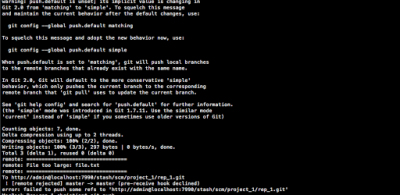Git is a great tool for versioning and storing code but has its limitations with large files. Furthermore, large files increase clone and fetch times for all users of the repository.
In this post I would like to show some techniques how to deal with large files and how they can play together.
.gitignore file
The first solution is to add a .gitignore file. In short a .gitignore file allows you to specify which files and directories in your working directory are ignored by Git. Setting up a .gitignore file is highly recommended (https://www.gitignore.io/ is a nice little tool to generate a .gitignore file) and covers already many use cases. E.g. you can configure a .gitignore file which contains patterns for files which are known to be large, e.g. music, video files, etc. But there are use cases and situations where a .gitignore file is not enough and has its limitations such as
– There is no .gitignore configured
– A new file is added but not configured in the .gitignore
– The file in question is temporarily removed from the file
– It is a all or nothing approach, either you allow or ignore the file by its extension or not
Git pre-receive hook
A second solution is to setup a Git pre-receive hook which checks the file size before the files are committed and rejects them if they exceed the configured size limit. This approach addresses some of the shortcomings of the first approach. E.g. it also works if there is no .gitignore file or if there is no pattern confgured. The problem which remains with this approach is that you developer needs to configure the pre-receive hook and can easily bypass it be temporarily remove the hook.
Server-Side Hook for Atlassian Stash
The first two techniques both rely on that they are configured properly by the developer on the local machine. If you are a user of Atlassian Stash you can configure server-side hooks for the Git repositories managed with Stash. Server-side hooks provide a mean for central management of rules and workflows for your development team.
As there was no plugin available for Stash I decided to developed the File Hook Plugin which provides a pre-receive hook that allows you to specify a file name pattern and size limit.

